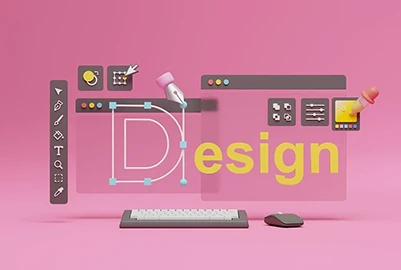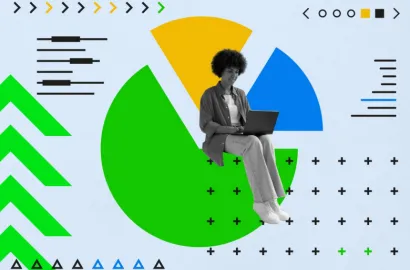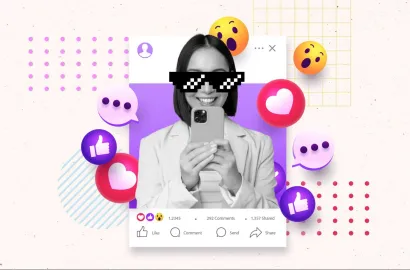Looking for flexibility in a graphic design role? We’ve gathered together the top remote graphic design roles for 2025 for you to get stuck into from the comfort of your home.
The ability to work remotely has transformed the employment landscape in almost every industry. This is especially true in the field of graphic design. Thanks to advances in technology and a shift in attitudes towards remote work since the pandemic, creative professionals can now take advantage of the increased work-life flexibility and global opportunities that remote work facilitates. Indeed, more designers than ever before are embracing the chance to work from anywhere, bolstering demand for their specific skills in ever-widening and remote areas.
If you’re interested in testing out the waters of remote work, then you’re in the right place. Here, we cover the top remote graphic design positions for you to consider for 2025 with all the details you need regarding salaries, skills, and where to find jobs.
Contents:
- Why remote work is more relevant than ever now?
- Advantages of working remotely
- How does a graphic designer work remotely?
- 5 remote graphic design jobs for 2025
- Conclusion
Let’s dive into the world of remote work and the top remote graphic design jobs available for 2025.
Why remote work is more relevant than ever now?
Remote work is an increasingly common working arrangement by which employees conduct their usual duties from a setting that is not a traditional office environment. This style of working is particularly popular in industries such as technology, marketing, customer service, media, and design. Thanks to advances in technology, many roles within these fields no longer require an individual’s presence in a physical location.
A surge in remote work was witnessed in many industries during and after the Covid-19 pandemic. This was largely due to ongoing lockdowns and social distancing measures that required individuals to remain apart for prolonged periods. The wide range of businesses that were able to adopt remote working practices to remain in operation demonstrated how many different roles could be effectively performed outside of an office.
Since the end of lockdowns and social distancing in many nations, increasing numbers of companies have adopted permanent remote or hybrid work models as it enables them to safeguard employee health, lower the cost of business operations, and attract and hire talent from across the globe.
The shift to remote work has also been supported and accelerated by advances in technology. In particular, digital collaboration tools such as Zoom, Microsoft Teams, and Slack have enabled colleagues to collaborate in real time, share files, and take part in video-based meetings from the comfort of their homes.
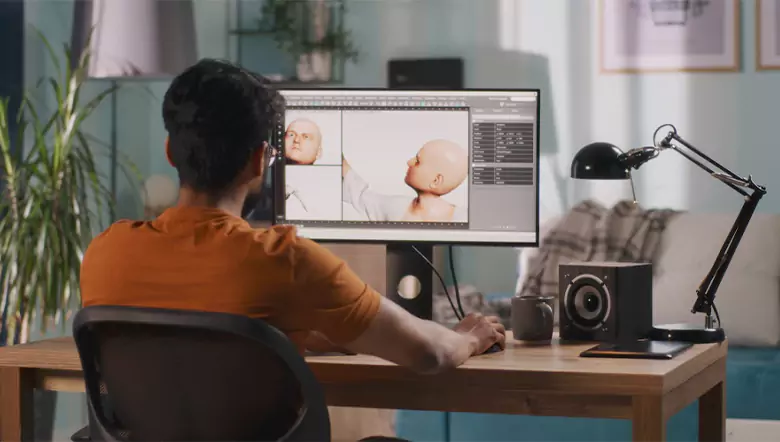
What are the advantages of working remotely?
There are a range of advantages for both businesses and individuals in adopting a remote work or hybrid work policy.
For business
Interestingly, while some employers might be hesitant to adopt a model where employees are not physically present, a 2024 study by Stanford found that remote employees are more productive than their on-site counterparts. It’s thought the reason for this is because they are less likely to need time off and also less likely to quit.
Another study, Owl Lab's 2022 State of Remote Work Report, found that 62% of workers also feel more productive when they work from home than when they work in the office. Fewer workplace distractions, a quieter environment, and the flexibility to work during their most productive hours are also cited as reasons for employees experiencing increased productivity thus benefiting both businesses and employees.
Another big advantage is the larger talent pool that employers can hire from when the organization offers remote working opportunities. Not only can the very best candidates for each role be hired, but an employer can also create a much more diverse workforce when they can hire individuals from anywhere in the world.
For employees
For employees, remote work is often seen as a solution to improving the work-life balance. With the work commute eradicated, and control over work schedules given back to employees, workers can more easily achieve a balance between their working and personal lives.
Employees can also make significant cost savings when they are able to work from home. They don’t have to spend money on transport for the work commute, professional attire, or lunches bought on the go.
Finally, employees have been found to experience significantly boosted well-being when they are allowed to work from home. Thanks to increased flexibility and autonomy, stress levels tend to come down and job satisfaction increases. Employees also report feeling more trusted by their employers. This leads to an increased feeling of confidence when performing specific tasks without direct managerial supervision.
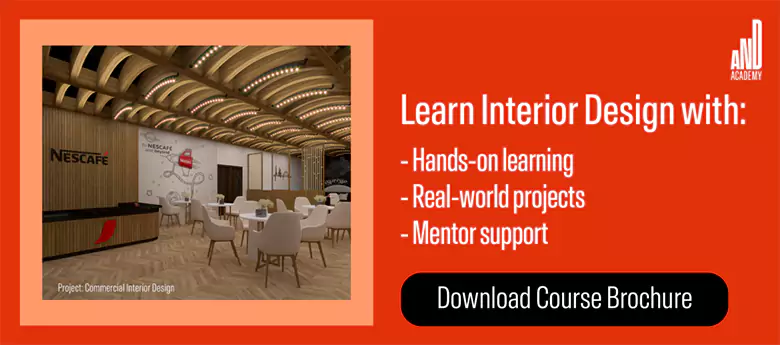
How does a graphic designer work remotely?
While each graphic designer will have his or her own unique processes and preferences when it comes to how they work remotely, software tools will play a key role in every case. A graphic designer would use the latest digital tools to create and test new designs, communicate with colleagues and clients, and collaborate with team members from any location.
Key tools in the field include Adobe Creative Suite, Figma, and Sketch for creating visual assets and design elements, while cloud storage platforms like Google Drive and Dropbox are frequently used to share work and ensure each team member has easy access to files in order to collaborate on a project.
For communication with clients, project stakeholders, and colleagues tools such as Slack, Zoom, and Microsoft Teams come to the fore. All of these tools support real-time discussions, file-sharing, screen-sharing, and video calls which are ideal for discussing project briefs or simply reviewing a new design.
For project management, software like Trello and Asana support remote graphic designers in staying ahead of their deadlines, organizing their workloads, and tracking progress on different tasks or projects while also being able to see the work of others.
Finally, many graphic designers who work remotely enjoy using shared digital workspaces and review platforms like InVision and Miro as these industry-leading tools facilitate the coming together of designers in a digital environment to give feedback and make live adjustments to a project.
5 remote graphic design jobs for 2025
Let’s take a look at the top remote graphic design positions to consider for 2025, giving you insight into each role's responsibilities, skills, and earning potential so you can find the perfect fit.
1. E-commerce designer
An e-commerce designer is a design professional who works for online retailers creating and enhancing online shopping experiences for users. Their goal is to support the design team in attracting new customers, encouraging purchases, and nurturing loyalty to the brand.
The responsibilities of the e-commerce designer typically include designing website layouts, user interfaces, and digital assets such as website banners and product images. This requires a deep understanding of graphic design principles and their application, particularly in areas such as navigation, mobile responsiveness, and load speed as these elements particularly impact the overall usability of an interface and a business’ conversion rates.
Skills
These are the skills that are typically required of e-commerce designers.
Hard skills
- Graphic design, including proficiency in tools like Adobe Photoshop, Illustrator, and InDesign
- UI UX design, especially the application of the principles of user interface and user experience
- Basic understanding of coding languages such as HTML/CSS
- Responsive design
- Wireframing and prototyping
- Conversion rate optimization (CRO)
- On-page SEO
- Knowledge of analytics tools like Hotjar and Google Analytics
- Photography and video editing
Soft skills
- Visual creativity
- Attention to detail
- Problem-solving design and usability issues
- Strong communication skills to articulate design decisions across teams
- User empathy
- Customer-centric mindset that prioritizes the user journey and experience
Salary range
These are the average salaries that e-commerce designers can expect to receive in the US and India at different levels of experience.
US
- Entry-level e-commerce designer: $90,000 per year
- Mid-level e-commerce designer: $119,893 per year
- Senior e-commerce designer: $151,092 per year
Data from Talent.com
India
- Entry-level e-commerce designer: ₹4L per year
- Mid-level e-commerce designer: ₹8L per year
- Senior e-commerce designer: ₹14.5L per year
Data from Glassdoor.co.in
Job boards for e-commerce designers
Some popular job boards for e-commerce designers include the following:
- Dribbble
- Behance
- AIGA Design Jobs
- Coroflot

2. Brand designer
A key role in a company’s design team, the brand designer is responsible for crafting and maintaining a company’s visual identity. The goal of a brand’s visual identity is to be a cohesive and recognizable image that truly reflects and communicates the organization's values, personality, style, and purpose to its target audience. The brand designer therefore creates design elements such as logos, color schemes, and typography that accurately represent the company and ensure that each of these elements as well as the overall ‘look’ are maintained across all platforms both on and offline. Brand designers play an important role in the design team as they help to influence how audiences perceive the brand.
Skills
These are the skills that are typically required of brand designers.
Hard skills
- Graphic design skills, in particular, proficiency in design principles like color theory and typography
- Skills in using design software such as Adobe Creative Suite
- Branding, logos, and identity design
- Typography and font type selection
- Illustration
- Skills in designing for the web, social media, and digital ads
- Knowledge of designing for physical formats such as packaging
- Photography and photo editing
- Basic knowledge of UX UI principles
- Market research and competitor analysis
Soft skills
- Creativity to come up with compelling designs
- Communication to explain design concepts and strategies
- User empathy
- Collaboration, particularly with marketing, content, and product teams
- Brand awareness and how design affects brand perception
Salary range
These are the average salaries that brand designers can expect to receive in the US and India at different levels of experience.
US
- Entry-level brand designer: $40,000 - $55,000 per year
- Mid-level brand designer: $55,000 - $85,000 per year
- Senior brand designer: $85,000 - $120,000+ per year
India
- Entry-level brand designer: ₹3L per year
- Mid-level brand designer: ₹8L per year
- Senior brand designer: ₹16L per year
Data from AmbitionBox.com
Job boards for brand designers
- DesignJobsBoard (DJB)
- Krop
- Authentic Jobs
- Dribbble
- Behance
- AIGA Design Jobs
- Coroflot

3. Social media designer
Working primarily on a business’s social media channels, a social media designer crafts engaging visual content that is tailored for specific audiences, promotes a brand’s identity, and drives user interaction. Depending on the specific platform they are working with, their output will vary, but the visual content they produce primarily consists of images, graphics, videos, animations, and interactive elements for posts, stories, and ads on sites such as Instagram, Facebook, X, TikTok, and LinkedIn.
Being mindful of the platform’s existing style and catering to its unique audience is key to the role, and the designer will make eye-catching and on-brand content that complements the channel while aligning with the messaging and goals of the social media team. Key roles that a social media designer collaborates closely with include social media and marketing managers, as well as copywriters and videographers. The designer works with these individuals on the brand’s voice and visual style as well as campaign goals, analytics, and ad testing to ensure optimal results.
Skills
These are the skills that are typically required of social media designers.
Hard skills
- Graphic design, with a strong foundation in design principles
- Design software, such as Canva and Figma
- Video editing, for example proficiency with Final Cut Pro
- Animation and motion graphics as well as knowledge of relevant tools like After Effects to create engaging, animated stories
- In-depth knowledge of social media platforms and the differences between them
- Photography and photo editing
- Responsive design to ensure the content works well on different devices
- Branding
- Social media trends and ability to understand analytics
Soft skills
- Strong creative skills
- Precision in design elements and brand consistency
- Communication and collaboration with social media managers, marketers, and copywriters
- Adaptability, in particular responding to platform updates and trends
- Deep understanding of target audiences, their preferences, and behavior
- User empathy to create resonating, relevant content.
Salary range
These are the average salaries that social media designers can expect to receive in the US and India at different levels of experience.
US
- Entry-level social media designer: $39,326 per year
- Mid-level social media designer: $56,142 per year
- Senior social media designer: $71,555 per year
Data from Salary.com
India
- Entry-level social media designer: ₹7L per year
- Mid-level social media designer: ₹10L per year
- Senior social media designer: ₹12.5L per year
Data from Glassdoor.co.in
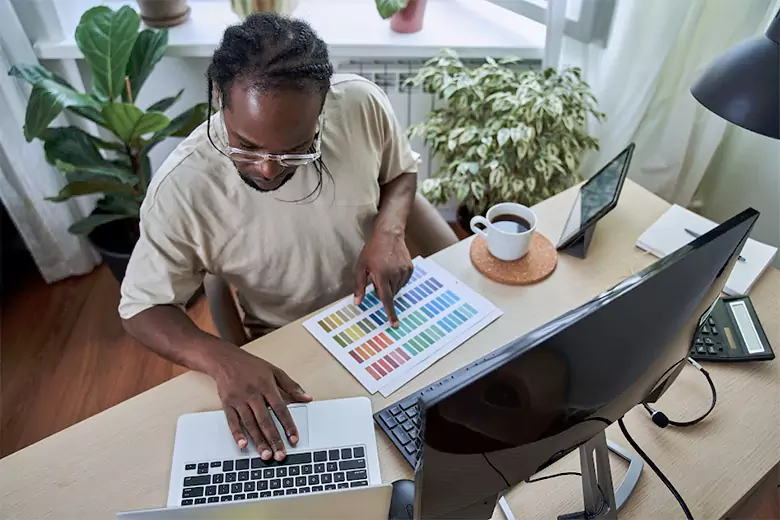
Job boards for social media designers
- Dribbble
- Behance
- AIGA Design
- Creativepool
- DesignJobsBoard
- Social Media Jobs
- Marketerhire
- Working Not Working
- AngelList
- The Dots
4. Web designer
Combining skills in visual and interactive design, a web designer is responsible for creating design assets and layouts that ensure a website is aesthetically pleasing, engaging, easy to use, and highly responsive. The role requires a deep knowledge of colors, fonts, images, layouts, and content hierarchy for the designer to accurately reflect the brand’s goals and identity while still meeting the needs of its users.
Web designers aim to curate a seamless experience for website visitors by focusing on intuitive navigation, responsive design, and accessibility. They achieve this by harnessing tools such as Adobe XD, Figma, and Sketch for wireframing and prototyping. Many web developers also have basic skills in programming HTML, CSS, and JavaScript in order to both build basic versions of their designs and hand over accurate design specifications to developers.
Skills
These are the skills that are typically required of web designers.
Hard skills
- Graphic design including color theory, typography, layout, and composition
- Design software such as Adobe Creative Suite and Sketch
- UI UX design for the creation of user-friendly websites
- Basic HTML/CSS skills to understand how designs are implemented
- Responsive design
- Wireframing and prototyping to plan layouts and interactions
- SEO basics
- Animation and interactivity
- Skills in content management systems for designing and managing website content
- Knowledge of web accessibility standards
Soft skills
- Ability to design and develop visually appealing designs that effectively communicate a brand’s core message
- Communication skills, particularly for exchanging designs and ideas with developers and product managers
- Ability to troubleshoot design challenges and find creative solutions
- User empathy and ability to create designs that help users reach their goals
- Collaboration skills to work effectively with other designers and developers
- Research and trend awareness

Salary range
These are the average salaries that web designers can expect to receive in the US and India at different levels of experience.
US
- Entry-level web designer: $52,000 per year
- Mid-level web designer: $69,998 per year
- Senior web designer: $115,113 per year
India
- Entry-level web designer: ₹ 250,000 per year
- Mid-level web designer: ₹ 356,218 per year
- Senior web designer: ₹900,000 per year
Data from in.Talent.com
Job boards for web designers
- Dribbble
- Behance
- AIGA Design Jobs
- DesignJobsBoard (DJB)
- Creativepool
- Stack Overflow Jobs
- AngelList
- GitHub Jobs
- Krop
- Authentic Jobs
Motion graphics designer
Motion graphics refers to a form of animation that combines graphic design elements with movement. However, unlike traditional animation which primarily focuses on telling a story, the role of motion graphics is to communicate information or elaborate on concepts. It does this using text, shapes, icons, and other visual elements to create visually dynamic and compelling content.
The role of the motion graphic designer is to create these animated visuals, to convey information, tell stories, or boosting a brand’s messaging within a digital context. With a combination of graphic design skills and animation techniques, these design professionals use tools like Adobe After Effects and Blender to produce dynamic content for websites, social media, advertising, and many other digital publications.
Although a key member of the design team, the motion graphic designer also collaborates with other teams, working closely with marketers, video editors, and creative directors to ensure goals, messaging, and branding are consistently aligned across channels and campaigns.
Skills
These are the skills that are typically required of motion graphics designers.
Hard skills
- Proficiency in animating text and images to create appealing motion sequences
- Skills in using design software such as Adobe After Effects, Blender, and Adobe Premiere Pro
- 3D modeling and animation skills as well as knowledge of 3D tools when needed
- In-depth knowledge of typography, principles of good typography design, and how to animate text.
- Skills in storyboarding and scene planning
- Proficiency in video editing techniques
- Knowledge of scripting using tools like After Effects
- Skills in visual effects to enhance animations
- Ability to synchronize animations with music, voiceovers, and sound effects
Soft skills
- Skills in creating original animations that engage viewers
- Precision in timing, motion, and detail
- Time management skills
- Creative problem-solving skills regarding animation challenges
- Ability to interpret briefs, present ideas, and collaborate with other creative teams
- Knowledge of design and animation trends as well as the latest tools and technical developments

Salary range
These are the average salaries that motion graphic designers can expect to receive in the US and India at different levels of experience.
- Entry-level motion graphics designer: $68,250 per year
- Mid-level motion graphics designer: $87,752 per year
- Senior motion graphics designer: $139,693 per year
Data from Talent.com
India
- Entry-level motion graphics designer: ₹350,000 per year
- Mid-level motion graphics designer: ₹450,218 per year
- Senior motion graphics designer: ₹960,000 per year
Data from in.Talent.com
Job boards for motion graphics designers
- Motionographer jobs
- Dribbble
- Behance
- Animation World Network
- Createpool
- ArtStation Jobs
- The Dots
- Authentic Jobs
- Krop
Conclusion
We hope you’ve found some valuable insights to take away from our rundown of top remote graphic design jobs for 2025. As we’ve seen, remote work is becoming more of a fixture in the design world, enabling professionals to blend creativity and flexibility like never before.
The roles we’ve covered in this article show the diverse range of opportunities out there for graphic designers, demonstrating that remote work in the field is brimming with possibilities for those committed to learning the right combination of technical and creative skills. If you’d like to learn skills in graphic design and launch a new career in the field, check out AND Academy’s Graphic Design Courses.
If you want to build a strong graphic design portfolio to land a remote job, we recommend checking out this project by AND learner Dushyant Singh for inspiration.
Next Steps
If you still have unanswered questions about pursuing graphic design, consider these additional resources for further information:
- Watch this session by graphic design industry leaders Soumya Tiwari and Sakshi Jain.
- Talk to a course advisor to discuss how you can transform your career with one of AND Academy’s courses.
- Explore our Graphic Design Course, which is taught through live, interactive classes by industry experts, and comes with a job guarantee.
- Take advantage of the scholarship and funding options that come with our courses to overcome any financial hurdle on the path of your career transformation.
Note: All information and/or data from external sources is believed to be accurate as of the date of publication.



